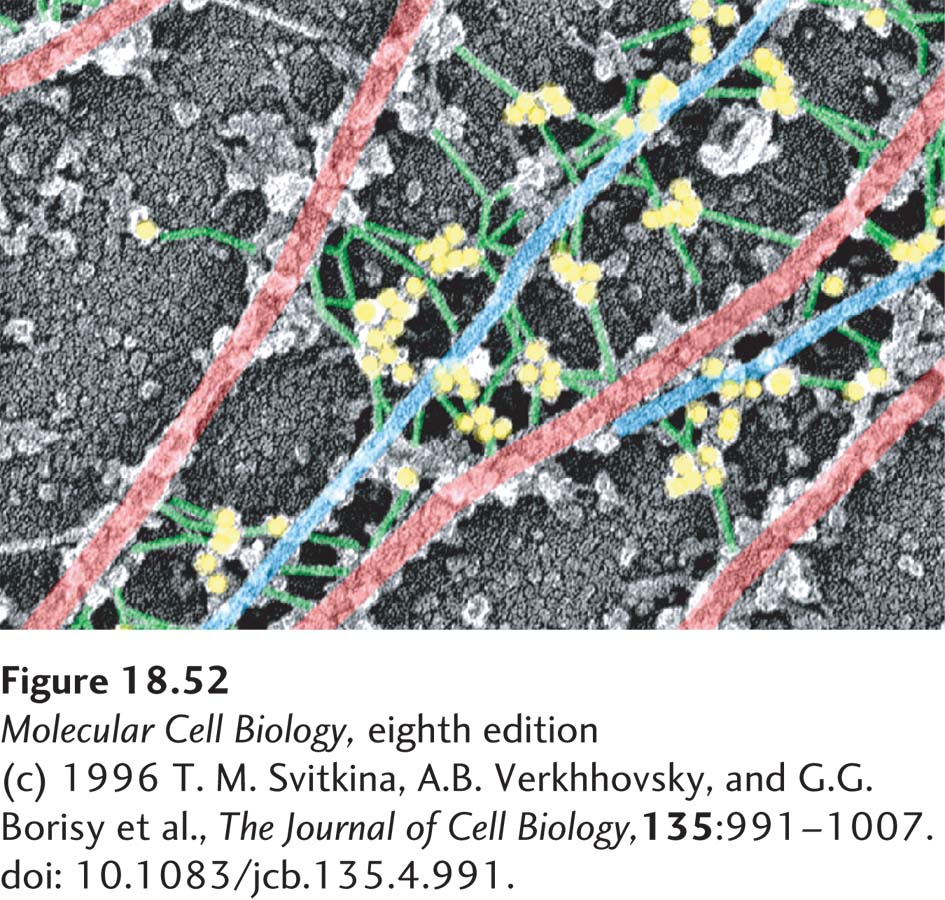A group of proteins collectively called intermediate filament–associated proteins (IFAPs) that co-purify with intermediate filaments have been identified. Among these IFAPs are members of the plakin family, which are involved in attaching intermediate filaments to other structures. Some plakins associate with keratin filaments to link them to desmosomes, which are junctions between epithelial cells that provide stability to a tissue, and hemidesmosomes, which are located at regions of the plasma membrane where intermediate filaments are linked to the extracellular matrix (these topics are covered in detail in Chapter 20). Other plakins are found along intermediate filaments and have binding sites for microfilaments and microtubules. One of these proteins, called plectin, can be seen by immunoelectron microscopy to provide connections between microtubules and intermediate filaments (Figure 18-52).

EXPERIMENTAL FIGURE 18-52 Gold-labeled antibody identifies plectin cross-links between intermediate filaments and microtubules. In this immunoelectron micrograph of a fibroblast cell, microtubules are highlighted in red, intermediate filaments in blue, and the short connecting fibers between them in green. Staining with gold-labeled antibodies to plectin (yellow) reveals that these connecting fibers contain plectin.
[(c) 1996 T. M. Svitkina, A.B. Verkhhovsky, and G.G. Borisy et al., The Journal of Cell Biology, 135:991–1007. doi: 10.1083/jcb.135.4.991.]

